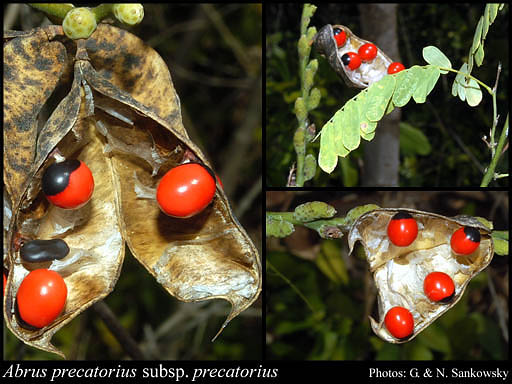- Conservation Code
- Not threatened
- Naturalised Status
- Native to Western Australia
- Name Status
- Current
Climber, seeds are extremely toxic. Fl. purple-violet, Jan or Mar to Jul or Nov to Dec. Sand, sandstone, limestone, basalt. Coastal areas, creeklines.

Scientific Description
Prostrate,spreading or scrambling. Stems terete, not spiny, hairy; pustules or glands absent. Leaves or phylloclades clearly present, compound, alternate, not continuous with stem, 65-105 mm long, hairy, with simple hairs, flat with flat margins; margins entire, leaflets 19-37, pinnately arranged, terminal leaflet present, stalked; pustules or glands absent. Stipules present and persistent to older leaves, 1.5-3 mm long, without glands, ribless. Bracteoles present and persistent. Calyx 2-3 mm long, not accrescent, hairy, with simple hairs, ribless; pustules or glands absent. Corolla multicoloured, mostly pink, with some purple spots, streaks or blotches; claws present; standard 8-10 mm long, glabrous, not auriculate, wings 7-8 mm long, not auriculate. Stamens nine; filaments united in an open sheath. Fruit 35-40 mm long, 13-15 mm wide, sessile or subsessile, constricted between the seeds, flat or compressed, hairy, with simple hairs, not beaked. Flowers in January, March, April, May, June, July, November and December. Occurs in the Northern Botanical Province, in the Northern Kimberley, Victoria Bonaparte, Central Kimberley, Ord-Victorian-Plain and Dampierland IBRA regions.
Distribution
- IBRA Regions
- Central Kimberley, Dampierland, Darwin Coastal, Northern Kimberley, Ord Victoria Plain, Victoria Bonaparte.
- IBRA Subregions
- Berkeley, Fitzroy Trough, Keep, Mitchell, Mount Eliza, Pindanland, Purnululu.
- IMCRA Regions
- Cambridge-Bonaparte, Canning, Kimberley.
- Local Government Areas (LGAs)
- Broome, Derby-West Kimberley, Halls Creek, Wyndham-East Kimberley.